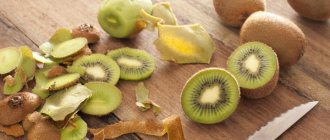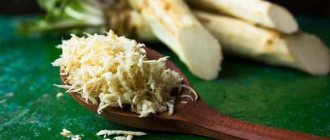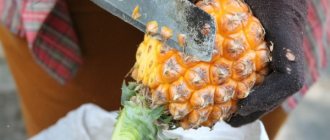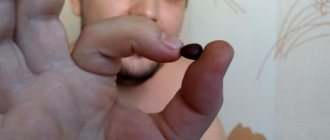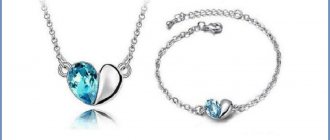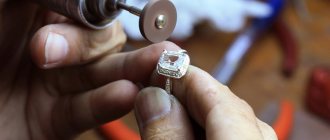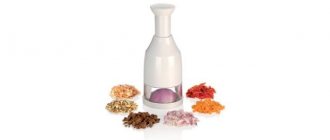“Grandfather is sitting, dressed in a hundred fur coats. Whoever undresses it sheds tears” - this ancient riddle about onions leaves no doubt that at all times one had to cry when “communicating” with this caustic vegetable. But there is no way to do without it in cooking. Is there a way to peel and cut onions without crying? Eat! “Cozy Kitchen” even has more than one option, so choose the one you like best.
You can't do without onions in cooking. But cleaning and cutting it is sometimes excruciatingly painful.
Exploitation of loved ones
The most reliable way not to shed tears from onions is to entrust this unpleasant task to someone else . Most often, the victim becomes the spouse, although there are other options. It all depends on which relative is within reach and decides to perform a feat for the sake of your beautiful eyes.
The easiest way to cut onions without crying is to entrust this task to someone else.
Trimming, sorting
- When the onion dries, you need to trim the leaves, but be sure to leave a neck 50 mm long. It will prevent the bulb from becoming infected.
- Use dried feathers as twine for tying.
- Before storing turnips, sort them by size. Place small onions in jars, medium and large ones in boxes or store tied.
- Clean, peeled onions can be stored in a box. Bulbs with an open, thickened neck are best selected and used for cooking.
- Onions without husks are not afraid of diseases and pests.
Protecting your eyes
Those who use contact lenses : they protect their eyes from the irritating effects of onion fumes. Goggles no longer have such a wonderful effect, unless they are special swimming goggles that fit tightly to the face. Such a radical remedy as a gas mask is, of course, also effective, but, perhaps, too extravagant.
The means of protection can be quite extravagant. Swimming goggles are an affordable and effective means.
How to Avoid Tears When Peeling Onions
Few people like the feeling of burning, stinging in the eyes, and watery eyes when chopping an onion head. Therefore, new methods are constantly being invented to avoid such unpleasant manifestations. There are many ways to chop onions without crying.
The word lachrymator comes from the Latin lacrima , which literally translates to tear. And in order not to cry from onions, you need to avoid getting lachrimators on the mucous membranes of the eyes in every possible way.
The correct cutting method will help avoid tears
There are some general tips:
- Remove onions from your diet . The easiest way to protect yourself from onion tears is to avoid using this vegetable. But then many dishes will lose their taste, sharpness, and piquancy.
- Use “tearless” varieties . Chinese breeders have developed a special variety of this vegetable for cultivation, which does not cause tears when cutting it. However, it is significantly inferior in taste and aroma to its “tear-water” brother.
- Cut with a sharp, thin knife . It is best to cut the onion with a very sharp and thin knife. The fact is that a knife with a wide blade will come into contact with the entire surface of the vegetable, and more irritating substances will remain on it. The same thing happens when onions are cut with a dull knife. You have to make a lot more movements, the pulp wrinkles more and releases more irritating substances to the mucous membranes. The sharper the knife, the less the onion will wrinkle, it will be possible to cut it faster, which means that fewer volatile substances that cause tears will be released. A good tool is a ceramic knife, cutting with which reduces the amount of irritating sulfurous substances released by onions. It is highly not recommended to use serrated knives, as they damage the onion cell membrane more strongly, and much more lachrymators will be released.
- Stock up on a separate board . It is necessary to cut onions on a separate board intended only for this purpose and for chopping greens. When cutting very tough onions, you can first sprinkle the board with salt.
- Change the cutting method . Professional chefs have empirically come to the conclusion that lachrymators are unevenly distributed in the onion head. There are more of them closer to the root, so it is recommended to cut it last. To begin with, the head should be cut into halves from top to bottom. Then the half is placed cut side down and they begin to cut from the top, first into half rings, and then into cubes (or only half rings). This helps to save yourself from tears.
- Quick cutting will protect you from tearing, because lachrymators simply won’t have time to exert their irritating effect. But to do this you need to be able to cut vegetables at the speed of a professional chef. Therefore, this advice can work in the long term, once the skill of very fast cutting is acquired.
Cut onions in water or soak them
Before chopping onions, so that they don’t sting your eyes, experts recommend putting the vegetable in warm, salted water for half an hour. During this time, volatile substances become heavy and less mobile, and lose the ability to squeeze out tears.
You can try cutting the onion under water, but this is very inconvenient. Water will act as a barrier and solvent for lachrymators, but the vegetable itself will become slippery, so it is unlikely that it will be possible to cut it normally, and the danger of cutting yourself will increase several times. It's better not to experiment.
Soak a knife or onion in cold water
When cooled, all chemical reactions slow down. That is why experienced housewives advise putting the onion and knife in the freezer for 20 minutes before slicing.
Constantly rinsing the knife will prevent tearing
Using the same principle, it is recommended to wet the knife and onion with cool water. This is done continuously throughout the cutting process. But in addition to slowing down chemical reactions from exposure to cold, in this situation water acts as a solvent in which volatile sulfur compounds settle without having time to exert their irritating effect.
Note! When cutting an onion, you need to constantly rinse your hands in cool water.
At the same time, you should wet the handkerchief and constantly wipe your eyes with it. For these two reasons, it is recommended to cut vegetables next to the sink and cold water turned on.
Protect your eyes with glasses
Goggles or a swimming mask are barrier methods of protection against onion gas. It is necessary to use sports equipment, since goggles for surfing, swimming, snowboarding and skiing fit very tightly to the eyes, preventing lachrimators from penetrating the eye membranes.
Swimmer's goggles are a good way to protect your eyes from lachrymators.
Some people use regular glasses (sunglasses, for vision correction), and then complain that they still cry from onions. Such ophthalmic devices do not protect the eyes enough, so tearing begins. In addition to glasses, contact lenses protect your eyes well from caustic compounds. They fit tightly and do not allow sulfur compounds to pass through.
Cool the vegetable in the refrigerator or freezer
Pre-cooling the vegetable in the refrigerator, or even better, in the freezer, helps to cut onions without tears. With the same effect, the peeled onion is placed in cold water for several minutes. Cold reduces the irritating effect of sulfur compounds. Freezing in the refrigerator or anywhere else slows down chemical reactions; lachrymators are released at a much slower rate.
After cooling the onion, shredding does not cause tears
On a note! It is worth remembering that a very frozen onion is quite difficult to cut (it becomes very slippery and soft, it is difficult to hold it with your fingers). Meanwhile, the lachrymators in it do not evaporate after freezing, but only become slow. Therefore, the vegetable must be cut quickly so that the caustic compounds do not make you cry.
The best way not to cry from onions is not freezing, but light freezing.
Cut near a fire source
If onions make your eyes water, it is recommended to chop them near any source of open fire. Chemists claim that sulfurous fumes from onions oxidize when exposed to hot air and lose their irritating properties. Therefore, if you light a gas burner or candle near the cutting site, the fire will intercept sulfur compounds even before they reach the mucous membrane of the eyes. Also, a lit flame creates an upward flow of air, so volatile substances will immediately soar to the ceiling.
The candle burns caustic ethers
There is another opinion regarding wax (not paraffin) candles. If you place a wax candle near the place where you cut onions, the wax, when melted, releases substances that neutralize the irritating effect of sulfur. So the tears stop flowing.
Use a fan or hood
While cutting onions, it is better to constantly ventilate the room. You can cut vegetables under a hood or using a fan. The main thing is to create a flow of air between the bow and the person. This way you can drive away volatile sulfur compounds from your eyes and nose.
A kitchen hood will provide maximum comfort when chopping onions.
By chopping onions under a hood or using a fan, you can reduce the amount of caustic lachrymators in the air. At the same time, the onion smell will not permeate your clothes. And this is a very important bonus, since the onion aroma is absorbed into the fabric for a long time, and you can only get rid of it by washing the item with a powder with a strong smell. If there is no hood or fan, you should create a draft. But this option is fraught with a cold.
Advice! As soon as tears roll in while cutting onions, you can move to the opposite side of the kitchen, preferably to an open window, and expose your face to the fresh air and breeze. After a couple of minutes it will become easier and you can return to cutting work again.
Use a microwave
A microwave oven allows you to rid onions of the eye-corroding lachrymator without destroying their beneficial properties.
A few seconds in the microwave and onions won't make you cry!
All you need to do is peel the onion, cut off the bottom and top of no more than half a centimeter on each side and place in a shallow container. Place it in the microwave and turn it on to maximum heating mode for 20-30 seconds. Microwaves will evaporate the lachrymators that cause lacrimation, and the onion will be “neutralized.”
Place a glass of boiling water next to you
It helps to cut the onion without tears from the steam from a glass of boiling water placed next to the cutting board, which will dissolve the sulfur-containing essential substances in the air.
Steam from water will dissolve some of the lachrymators
As a result, they will not reach human eyes. Any vessel with boiling liquid has the same effect.
Using vinegar or a slice of lemon
Rubbing a cutting board and carving knife with lemon juice will briefly neutralize the tear-producing effects of eye irritants. Vinegar has a similar effect.
Treating the board with lemon will help prevent watery eyes.
The concentrated product must be diluted by half with water (you don’t need to do such manipulations with apple cider vinegar) and wipe the cutting board. It will stop the active release of lachrymators into the air. If this does not help, the proportion of vinegar can be increased. But you need to be careful, a large amount of preservative can worsen the taste of onions.
Use food processor
This device, as well as any chopper, blender, meat grinder with a closed box where the vegetable is placed, will save you from onion tears. Chopping onions using a food processor not only helps speed up the process. This kitchen unit is also a barrier method for protecting the eyes from the caustic secretions of onions.
Gadget for “tearless” onion chopping
To prevent anyone around you from crying from onions, you should use a food processor with a lid. If you simply put a vegetable in the chopping compartment and push it with a special device, then volatile compounds will still get into the air and irritate the mucous membranes of the nose and eyes. It is best to place the onion in the bowl of the food processor, close the lid and grind it to the desired consistency.
Important! The disadvantage of this technique is that it won’t work to cut onions, for example, into rings. But to chop it, you still have to peel the vegetable and cut it into pieces.
It's also not economical to run the food processor to chop just one or two onions. Therefore, this method only partially solves the problem and you need to look for more suitable ways to cut onions.
Boiling water
To make the process easier and quickly peel the onion, scald it with boiling water . After this, the husk can be removed with your fingers without damaging the bulb itself. At the same time, almost no essential oils are released, and it does not sting the eyes. All that remains is to cut off the “butts” with a knife, after which you can load the onion into the processor and chop it with the lid closed. This is one of the easiest ways to peel onions without crying.
Sometimes you have to peel a lot of onions.
Store peeled vegetables in dried form
Dried onions will retain all the substances that the fresh root vegetable contains. Dried vegetables are stored much easier, unlike frozen ones: they take up minimal space in the house and will not spoil if the refrigerator stops working. The weight of dried products is approximately 10-15 times less than fresh ones.
- in the oven using a baking tray;
- in an electric dryer, spreading the chopped onions in a container in one layer;
- in a microwave oven, putting the vegetable in a special bowl and setting the desired mode;
- in the sun, in a well-ventilated area, placing the product on thin aluminum baking sheets or paper.
If you live in a wooden house with stove heating, then you can also dry peeled and chopped onions on a cooling stove. Consider the fact that during the drying process, this vegetable emits a not very pleasant and pungent odor, as well as fumes that can make your eyes water. Therefore, make the room where the onions are dried thoroughly ventilated. An electric dryer or portable oven can even be used on the balcony.
It is better to dry onions cut into rings. If possible, choose hard, strong onions for drying. The rings should be thin, no more than 5 mm, and additionally cut into 2-3 pieces.
Temperature is approximately 40-60 degrees. Periodically stir the onions placed on trays or baking sheets. The vegetable dries completely in 4-7 hours, depending on the type of drying. Do not exceed the temperature, as the overdried product may darken greatly. Properly dried onions should have a white or pink-purple color, depending on the variety.
Dried onions will acquire a natural color with a golden tint if you hold them in cold and highly salted water before the process (about 40 g of salt per liter of water).
If you want to speed up the drying time, place the onions in boiling water for a few minutes before cutting them. Then dry in the oven at a temperature of 60-70 degrees.
After the onion has dried, you can chop it and place it in bags, plastic or metal cans. Store in a dry place. In this form, the vegetable will last for several years. It is used in food as a seasoning for various dishes.
Cold
The opposite option, but just as effective as boiling water, is cooling . When starting to clean, open the tap with cold water, sit next to it and rinse the knife under running water from time to time. If the onion is “thermonuclear”, you can periodically wash your eyes. Throw the peeled onions into a cup of cold water if you need to cut them right away. You can put the peeled onions in the freezer for a few minutes (just don’t forget about them). If time allows, put it in the refrigerator for a day, only then start cutting. After cooling, the essential oils are not as active, and the eyes will not sting as much.
Cutting onions without tears is the dream of every housewife.
Method "In two parts"
If the onion itself does not need to remain whole, it is simply cut in half.
Cleaning procedure:
- The head is cut into two halves using a sharp knife.
- Next, remove the peel, starting from the top (from the green sprouts) and down (to the roots).
- If you need to further chop the halves, the roots should not be cut off, since they can be held by the roots.
True, this method increases the chance that tears will appear in the eyes, since incisions are made when using it.
Special equipment
If you need to chop onions that have already been peeled, you can use “special means.” Among modern kitchen gadgets , there are many that are designed for cutting vegetables. If it's not a large food processor, then at least a grater or knife + a closed container into which the chopped onion goes. The contact of caustic volatile substances with the eyes is minimal, and you will not have to wash your face with tears.
The easiest way to chop onions is in a food processor.
Many kitchen gadgets today are designed to make chopping onions easy.
A plastic container on a grater protects your eyes from essential oils.
How to stop crying from onions?
Onions are a unique plant. It has firmly established itself in the human diet and is included in countless dishes. Thanks to it, products acquire piquancy and sharpness, and meat - juiciness. The onion contains many useful substances: B vitamins, as well as A, C and PP. Onion juice has antimicrobial properties and protects against colds. But as soon as you cut the vegetable, you immediately start crying. This is due to the substances it secretes to resist attacks from insects and rodents.
When onion fibers are damaged, a chemical reaction of amino acids and enzymes is triggered. As a result, the volatile compound 1-sulfinylpropane is produced. Once on the mucous membrane, upon contact with liquid, the substance forms sulfuric acid, which causes pain in the eyes and tears. To cut a vegetable without crying, you need to either protect the mucous membranes of the nose, mouth and eyes, or minimize the release of onion juice. This can be done in different ways, from washing the bulb with running water to using a gas mask.
Onion juice mostly causes tears when it gets into the nose rather than the eyes.
Ventilation
The easiest way to peel and cut onions without tearing is to provide good ventilation . It’s great if you have a kitchen hood installed. Just turn it on high and stand directly under it. In summer you can go out into the courtyard or onto the balcony. During the cold season, sit near an open window. If this doesn’t work, just blow under your nose, driving away acrid fumes from your eyes.
increase air exchange . Place the cutting board at a safe distance from the fire and start chopping the onions.
With vinegar
Mix water and vinegar in equal quantities and lightly moisten the cutting board with this solution. Vinegar will stop the toxic reaction of releasing sulfurous substances. If this does not help, increase the concentration of vinegar in the solution, but be careful: it greatly affects the taste of the onion.
There are many traditional ways to cut onions without crying. Despite the fact that some of them seem implausible and even funny, try at least a few, and then choose the most suitable one for yourself.
- Author: iarriba
Rate this article:
- 5
- 4
- 3
- 2
- 1
(0 votes, average: 0 out of 5)
Share with your friends!
B. Shredding onions into strips (dishes with raw onions)
1. Cut off the top tip of the onion, cut in half and peel.
2. Cut the pulp across the lines: unconnected, they will separate into thin strips.
Third video example:
Video taken from the YouTube channel “Granny Emma’s Recipes”
Adviсe
- If you don't cut off one end of the onion right away, it will be easier to peel the onion. However, when you cut an onion, it is better to remove both ends. Be sure to cut off the remaining end when you are finished cutting.
- Place the onion in cold water for 10 minutes and then chop it... this will keep you from crying.
- You can also chew gum or put a piece of bread in your mouth to prevent tears from appearing.
- If you don't want to cut the onion in half, make a shallow cut from top to bottom, this will be enough to remove the top layer and peel the onion.
- If you wear goggles (use diving goggles), you won't cry while cutting onions...it looks stupid, but it's effective!
- Try inserting two pieces of tissue into both nostrils, you will not cry. This method is similar to the above with glasses. Or you can simply hold your breath.
Dried
- Do not water onions 2-3 weeks before harvest.
- Remove the vegetable from the ground carefully, otherwise it will rot if the tops are damaged.
- For cleaning, take a garden fork or special scissors for cutting onions.
- If soil remains on the vegetable, it can be removed by hand or using the side of scissors.
- After digging, the onions need to be dried in the garden for 2–3 hours, and then indoors for 10–12 days.
It is better to dry onions cut into rings. If possible, choose hard, strong onions for drying. The rings should be thin, no more than 5 mm, and additionally cut into 2-3 pieces.
Take care of your fingers
The main secret of the pros is the grip of the hand holding the product. The fingers should be rounded, as if a bird is holding its prey. Elongated phalanges are easy to cut, bent or twisted ones - never. When chopping any product, learn to feel the side of the knife with your knuckles: this will increase the cutting speed by an order of magnitude. And your fingers will remain intact.
Warnings
- If possible, use a separate cutting board for each of the following: raw meats, poultry, cooked foods, seafood, fruits and vegetables, and dairy products. This will help you avoid cross-contamination. (For example, bacteria in the juices of raw meat can spoil vegetables if you use the same board). After each use, wash the cutting board thoroughly in hot soapy water.
- Always wash fruits and vegetables before cutting them to prevent pathogenic bacteria from being transferred to the inside of the fruit or vegetable.
- If you wash your hands and stainless steel knife after chopping onions (or garlic), you will remove the smell from your fingers.
- Use a non-serrated knife: A serrated knife creates uneven cuts when slicing onions, and if you're not careful, you can hurt yourself!
- Always be careful when using kitchen knives to avoid cuts.
